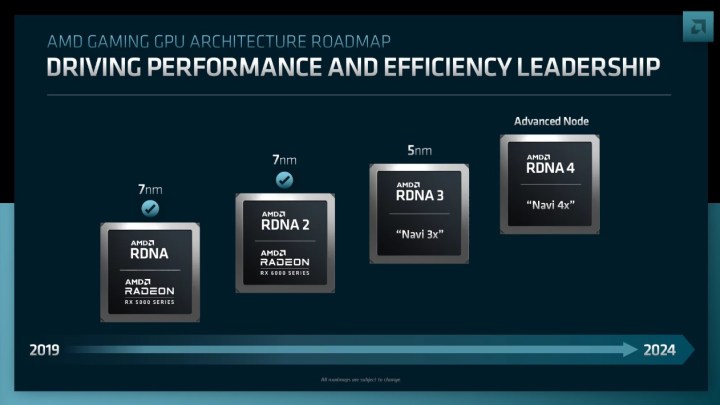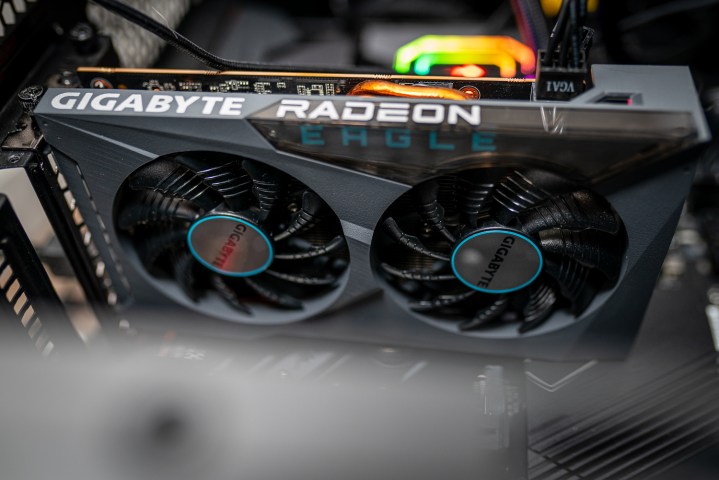AMD revealed several new details about its upcoming RX 7000 graphics cards during its Financial Analyst Day on Thursday. Chief among them are that RX 7000 graphics cards offer more than a 50% improvement in performance per watt over the previous generation, and that they’re coming later in 2022.
The greater-than-50% performance-per-watt mark is the same one AMD set for its RDNA 2 graphics cards, but the estimate could be conservative this time around. Recent rumors suggest that RX 7000 graphics cards could be up to 130% faster than the previous generation overall while staying relatively power efficient. If that’s the case, we could see AMD’s next-gen GPUs among the best graphics cards.

AMD didn’t go into that much detail during its financial presentation, so view rumored performance with skepticism. The company confirmed several details about the upcoming range, though. RX 7000 graphics cards will use a 5nm manufacturing process (rumors say Nvidia’s next-gen GPUs could use 4nm), and they’ll utilize a chiplet design.
This is one of the earliest rumors we heard about the RDNA 3 architecture featured on RX 7000 GPUs. The graphics cards could use a multichip module (MCM), which means AMD can combine multiple dies on the same chip. We’ve already seen MCM from the upcoming Ryzen 7000 processors, which uses a 5nm compute die and 6nm I/O die.
AMD also confirmed that it’s working on RDNA 4 graphics cards, which could launch around late 2023 or early 2024 (the road map is vague on the exact release window). The company didn’t share details about the manufacturing process, only saying “advanced node” in its road map instead. The company confirmed that Zen 5 processors will use 4nm and 3nm nodes, however. Given that we expect RDNA 4 graphics cards to line up with Zen 5, we expect 4nm or 3nm, but AMD hasn’t confirmed those details yet.
It’s tough to say when RX 7000 graphics cards will launch, but we expect them between November and December (that’s when RX 6000 GPUs launched two years ago). Recent rumors suggest that even entry-level RX 7000 GPUs can outperform flagship models from the previous generation, and that they won’t be power hogs.

That’s a big concern going into the next generation of GPUs. Nvidia’s RTX 40-series cards are rumored to have massive power requirements — as much as 600 watts on the flagship model. We haven’t heard anything official yet, but if the rumors are true, AMD could have a major leg up when it comes to efficiency. One leaker, at least, says that AMD will “decimate” Nvidia in power efficiency.
The flagship RX 7000 graphics card is also rumored to be the first GPU with PCIe 5.0 support, which makes sense given AMD’s upcoming Ryzen 7000 CPUs. The Ryzen 7000 platform supports PCIe 5.0, so it would make sense for AMD’s next-gen GPUs to, as well. For now, we’re looking forward to the fall. If the cards are on track to launch later this year, we expect to see them in action in the back half of 2022.




